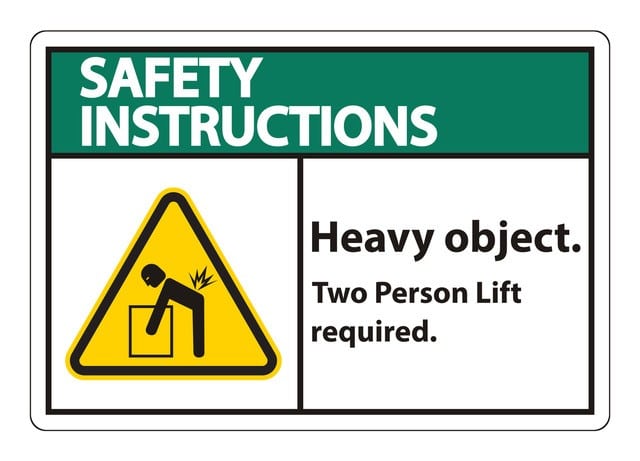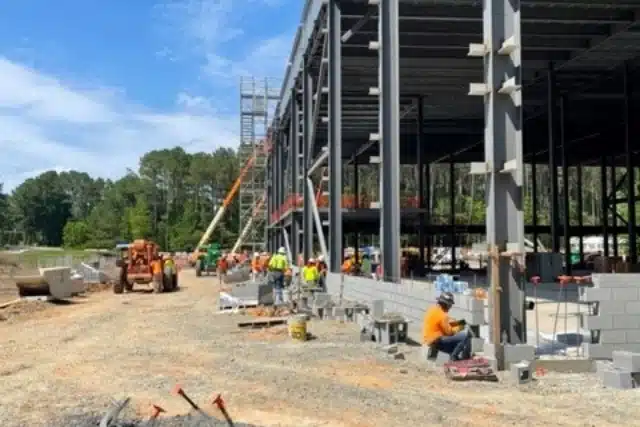Safety on a job site is everyone’s problem, and preventing workplace accidents is a team effort. There are ripple effects when an incident or accident occurs; there are consequences for your company, clients, and other employees on the job site, not to mention the individual and family of those directly involved. One way to enhance the safety program at your organization is to focus on situational awareness. Situational awareness involves paying attention and being aware of your surroundings; it is vital for preventing accidents, mitigating risks, and fostering a safety culture. Defined as the perception and understanding of one’s surroundings and the ability to anticipate potential hazards or threats, situational awareness is a skill and mindset that must be cultivated and practiced within any workplace environment. As the holiday season approaches and distractions increase, it’s easy for everyone to get caught up in their to-do lists. Take a moment this month to refresh your focus on situational awareness and help prevent workplace accidents at your facilities.
OSHA’s Top 10 Cited Standards for 2024
The Occupational Safety and Health Administration (OSHA) is crucial in ensuring workplace safety across various industries in the United States. To maintain safety standards, OSHA regularly inspects workplaces and enforces compliance with various regulations. OSHA has updated its list of the most frequently cited standards for all industries for its fiscal year 2024, which runs from October 1-September 30. Not surprisingly, these are the same standards cited from 2023; only the order of some standards has changed. Fall protection training rose a spot, while scaffolding dropped four spots on the list this year. Other standards have shifted within the list, but fall protection remains the number one from the previous year and it is worth noting that fall protection has remained the most frequently cited OSHA standard for the past 14 years.
Workplace Fire Safety: Best Practices for Prevention
Fire hazards are a significant concern in many workplaces, from industrial factories and construction sites to office buildings and retail spaces.
October is Fire Prevention Month, a time dedicated to raising awareness about fire safety and prevention. This annual observance, established to commemorate the Great Chicago Fire of 1871, emphasizes the importance of taking proactive steps to reduce the risk of fires at home, work, and in communities. Fire departments, schools, and safety organizations nationwide use this month to educate the public about essential fire prevention practices, such as installing smoke alarms, creating fire escape plans, and eliminating fire hazards. The consequences of workplace fires can be devastating, resulting in injury, loss of life, property damage, and business interruptions. Implementing adequate fire protection and prevention strategies is critical for ensuring the safety of employees, minimizing risk, and complying with regulatory requirements.
The Importance of Site Safety Audits
Workplace safety is crucial to any business, especially in industries where employees face potential hazards. Site safety audits ensure a safe and compliant working environment, particularly in the construction and industrial sectors. While OSHA inspections are mandatory and may occur without notice, many companies proactively conduct regular site safety audits. This approach allows businesses to identify and address safety risks before accidents or injuries happen. These audits systematically assess workplace safety practices, procedures, and policies to uncover potential hazards, ensure compliance with regulations, and promote a strong safety culture among workers. Below, we outline the key aspects of site safety audits, their benefits, and best practices for conducting them effectively.
15 Essential Topics for Your Next Construction Safety Meeting
Construction sites are inherently hazardous environments where safety must be a top priority. Regular safety meetings are essential for maintaining a safe workplace, reducing the risk of accidents, and ensuring that all workers are aware of potential hazards and how to mitigate them. These meetings, often called toolbox talks, provide an opportunity to discuss potential hazards, review safety protocols, and ensure everyone knows their responsibilities. Regular safety meetings help reinforce the importance of safety practices, promote awareness, and encourage open communication about safety concerns. Addressing specific risks and updating workers on any changes in procedures or regulations, these meetings are vital in preventing accidents and injuries on the job site. Here are 15 crucial topics to address at your upcoming construction safety meetings.
Enhancing Workplace Safety Through Effective Safety Signage
Enhancing Workplace Safety Through Effective Safety Signage
Safety signage refers to visual cues, symbols, and written messages safeguarding individuals in various environments, from workplaces to public spaces. These signs provide clear and concise instructions, warnings, and information about potential hazards, ensuring that individuals are aware of their surroundings and can take appropriate precautions. By prominently displaying safety signage, organizations demonstrate their commitment to prioritizing the well-being of their employees, customers, and visitors. Moreover, safety signage helps mitigate risks, prevent accidents, and save lives. It is a constant reminder of safety protocols and procedures, fostering a culture of awareness and accountability. Effective safety signage promotes a safe and healthy environment for all, from construction sites to manufacturing plants, airports, and mining sites. These are five ways safety signage can improve workplace safety at your facility:
Lifting Like a Pro: Best Practices in Workplace Safety
Lifting Like a Pro: Best Practices in Workplace Safety
Workplace safety is crucial for any organization, regardless of industry or size. Among the various safety concerns, proper lifting techniques are often overlooked, leading to many workplace injuries. Whether you work in a warehouse, a construction site, a healthcare facility, or an office, understanding and implementing safe lifting practices is crucial.
Site Safety Professional
The Vital Role of a Site Safety Professional in Project Success
Ensuring the safety of workers, visitors, and the surrounding community is paramount in any construction or industrial project. A commitment to safety fosters a positive work environment and ensures successful and profitable construction projects with safety as their foundation. Site safety professionals play a pivotal role in upholding this commitment. A qualified site safety professional can support your construction project through multifaceted means. These skilled experts are dedicated to implementing safety protocols, monitoring hazards, and promoting a genuine safety culture throughout the project’s lifecycle. Their expertise encompasses a range of essential functions that contribute to the safety of the construction or industrial site. Site safety professional oversight extends to providing impartial third-party assessments, offering valuable assurance and accountability throughout construction. The unique value that a qualified and certified construction safety professional brings to a project cannot be overstated. The presence of a qualified and certified construction site safety professional instills confidence in workers and contractors alike.
Welding Safety: Protecting Lives from Hazards
Welding Safety: Protecting Lives from Hazards
Welding, the process of joining metals through intense heat and melting, is a fundamental technique in construction, manufacturing, and various industries. While it plays a pivotal role in shaping our world, it’s essential to remember that welding involves inherent risks that can pose dangers to experienced professionals and novices alike. April is National Welding Month, a good opportunity to review the critical aspects of welding safety and highlight the precautions welders should take to ensure their safety and well-being.
Navigating Safety in Confined Spaces: A Guide for Construction Workers
Navigating Safety in Confined Spaces: A Guide for Construction Workers
Construction sites are bustling hubs of activity, with various tasks and projects unfolding simultaneously. While much attention is given to the grand structures being erected, it’s crucial to recognize the safety of the workers who are integral to the process. One particularly hazardous aspect of construction work is confined spaces, where the risks can be significantly amplified.









